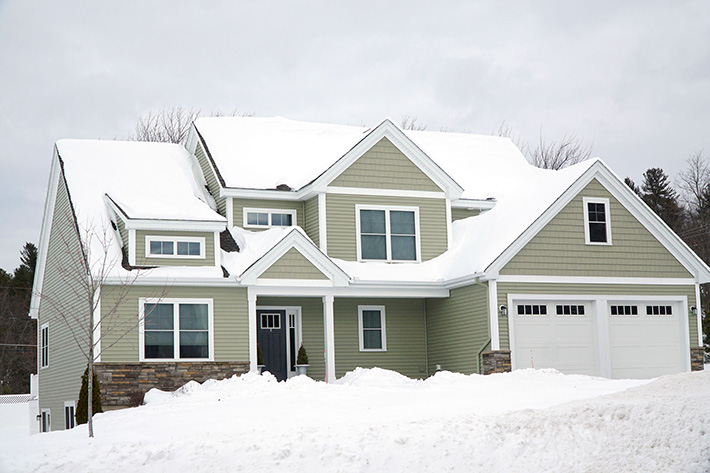Frozen pipes can be more than just inconvenient; they can be downright expensive. With the potential to damage multiple areas of your home, frozen pipes are a nuisance to be avoided.
Frozen pipes occur due to three main reasons: sudden drops in temperature, inadequate insulation and thermostats being set too low.
What can I do to prevent my pipes from freezing?
While it’s still warm…
1.Prepare yourself. Be sure to note where your water shutoff point is, and relay that information to others in your household. In the event of an emergency, this will be the first step to stopping further damage.
Determine whom to call in the event of an emergency. While small bursts may be able to get by on a temporary fix – such as using temporary patch kits, which homeowners should also have – larger-scale breaks may require immediate repair.
2. Insulate your pipes. Exposed pipes located in your attic and crawl spaces are even more susceptible to freezing. Not only are these pipes more exposed and vulnerable to the cold, these locations also don’t receive a steady heat flow.
Use proper materials to insulate your pipes depending on where they’re located – there are different forms of insulation for interior and exterior use. Forms of insulation products include a pipe sleeve, heat tape or heat cable. You can also install fiberglass or foam board over exposed pipes in the attic, crawlspaces, basement, garage, cabinets and other high-risk, colder areas.
3. The hose goes. Your garden hoses should be disconnected, drained, dried and stored properly before winter. If you’re able to, shut off the water from inside to drain leftover water in the pipes that lead to the outdoor faucets.
4. Seal air leaks. Pipes are already at high risk to freeze when it’s cold outside – the last thing they need is excess cold air making its way inside. Seal all leaks located near pipes that are capable of letting cold air sneak in. Look for leaks near pipes, dryer vents, and electrical wiring, and seal them with caulk or insulation.
When the temperature drops …
5. Set your thermostat. Many homeowners keep the heat off to avoid the bill that comes along with it. But, if your home is not kept warm enough, it can contribute to frozen pipes – which are much more costly than a heating bill.
Don’t turn down the thermostat at night. While you might feel warmer overnight underneath blankets, your home gets colder as the exterior temperature drops through the night.
If you’re going out of town during the colder months, keep your heat on at a minimum of 55°F. You can also shut of your water while you’re away, but be sure the pipes are drained. If there are leaks or breaks while you’re away, and there is still a bit of water left in the pipes, at least the damage will be minimal in comparison to leaving the water on.
6. Use a space heater. Placing a space heater in close proximity to unprotected pipes can help keep them warm. Remember, the goal is merely to keep the pipes above freezing (31 °F); you don’t need to overheat them.
Pipes running along the exterior wall in the kitchen tend to be quite vulnerable. Open kitchen cabinet doors and place the space heater in front to generate heat inside the typically closed-off space. This can also be beneficial for pipes inside bathroom cabinets.
7. Let it drip, let it drip, let it drip. Running the smallest amount of water through your pipes could make all the difference in whether they freeze or not. In times of severely cold weather, let warm water drip from the faucets that are served by exposed or poorly insulated pipes.
Original article posted by Bloomfield Construction.

